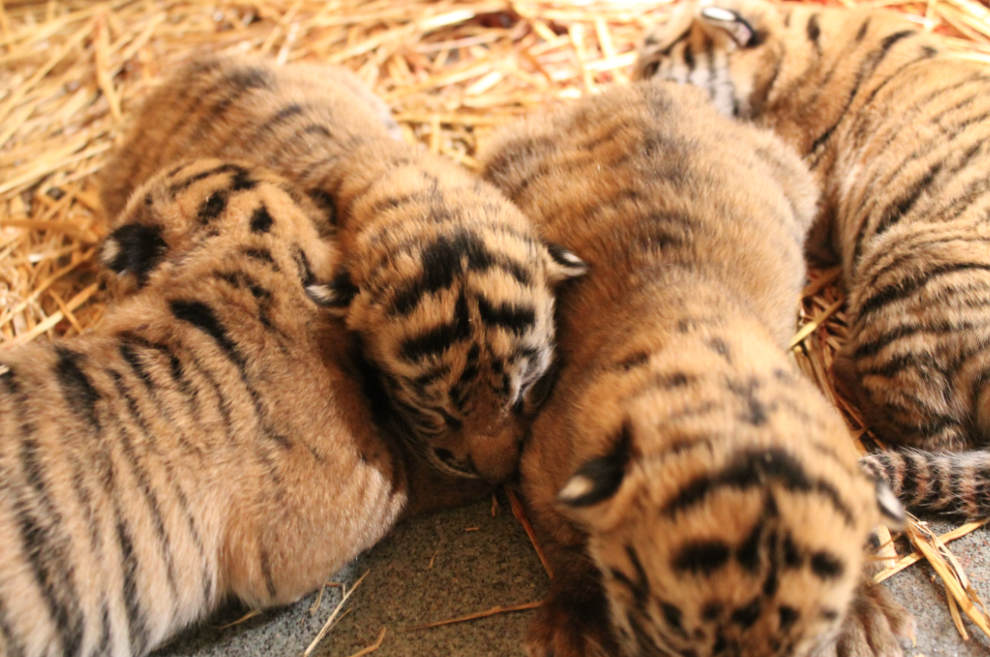TOPEKA —Four Sumatran tiger cubs were born Monday at the The Topeka Zoo and Conservation Center. Zoo staff and around 400-600 people watched the birth live from streaming web cams available here.

Second time mother Jingga is doing a perfect job taking care of the litter. Immediately after each was born, she began cleaning them and helped them into position to nurse.
The pairing between 8 year old Jingga and 7 year old, Sanjiv, was recommended by AZA’s Tiger Species Survival Program. Sanjiv is a first time father. Sumatran tigers live solitary lives in their range territories and he won’t have an active role in raising the cubs.
“Our Sumatran tigers represent one of our most well rounded conservation programs,” said Zoo Director Brendan Wiley. “We actively participate in breeding a critically endangered species and our community supports active conservation initiatives in their range territory.”
The cubs are currently in a den box inside the tiger building. Most of their first three months will be spent inside either in or near the den box. “When they get to be about three months old, they are typically big enough and steady enough to begin venturing outside when the weather is warm enough. They are after all tropical tigers,” said Wiley. Until they start venturing outside, the KTWU live streaming web cams will be the best way to see them.
If Jingga cooperates, the cubs will be weighed Tuesday. One key health indicator is weight gain and their weight at one day old will serve as the base line data.
Sumatran Tigers are the smallest of the tiger species and are critically endangered. There are less than 500 left in the wild. There are thirty zoos in North America that are working with Sumatran tigers. Collectively they manage a population of about 78 tigers with a goal of getting the population up to 150 animals. At 150 animals, it is estimated that healthy genetic diversity could be managed for 100 years. During that 100 year time frame, it is hoped that zoos can fix enough of the issues in their range territories to make it safe enough to begin reintroducing tigers back into the wild.
